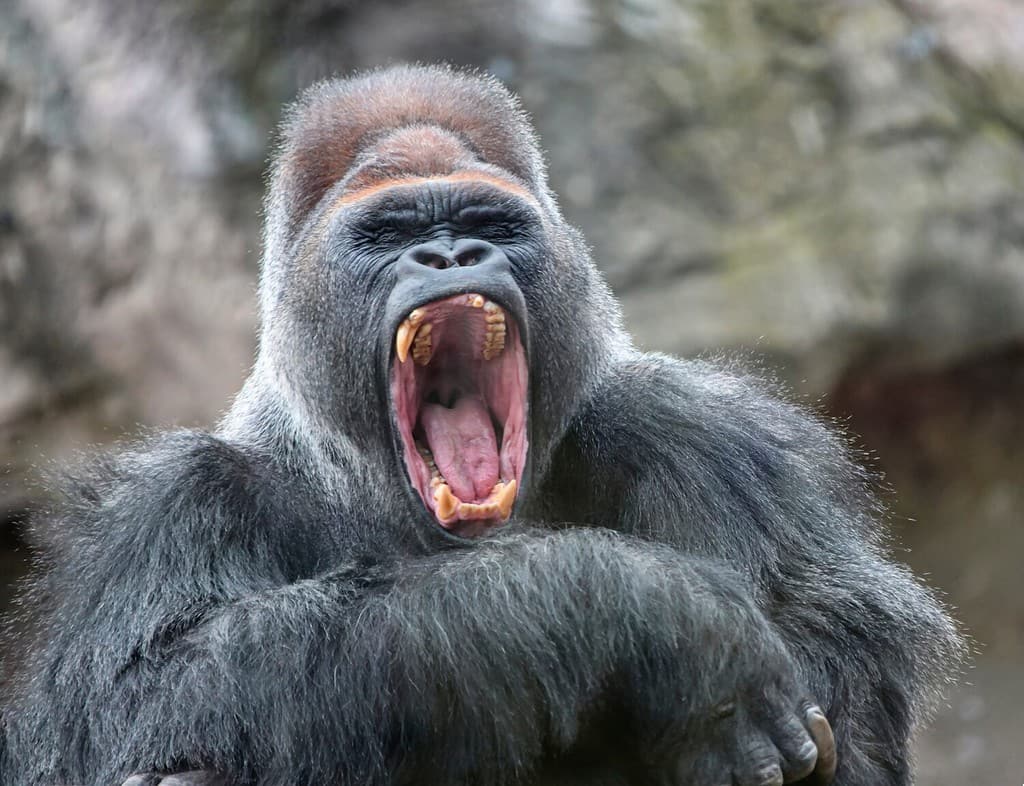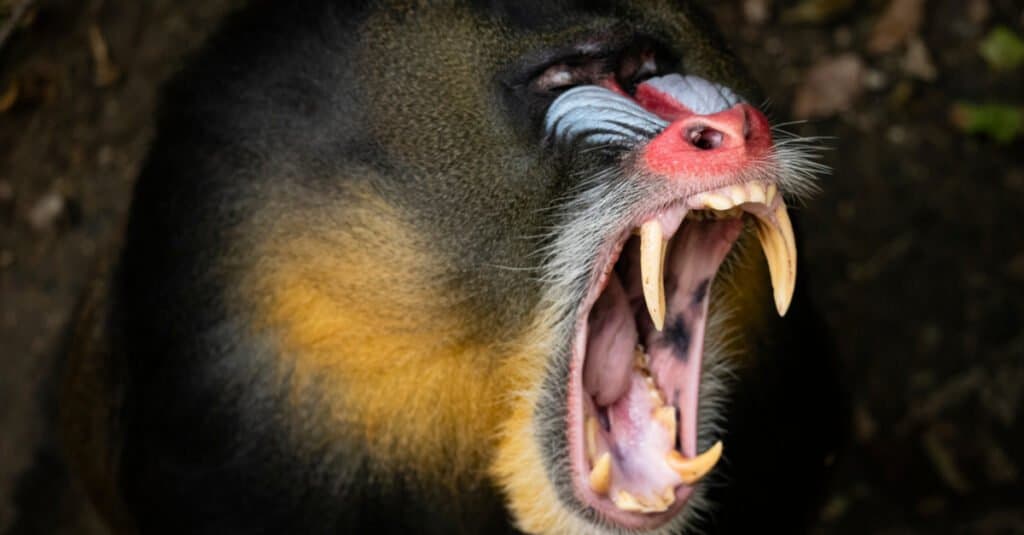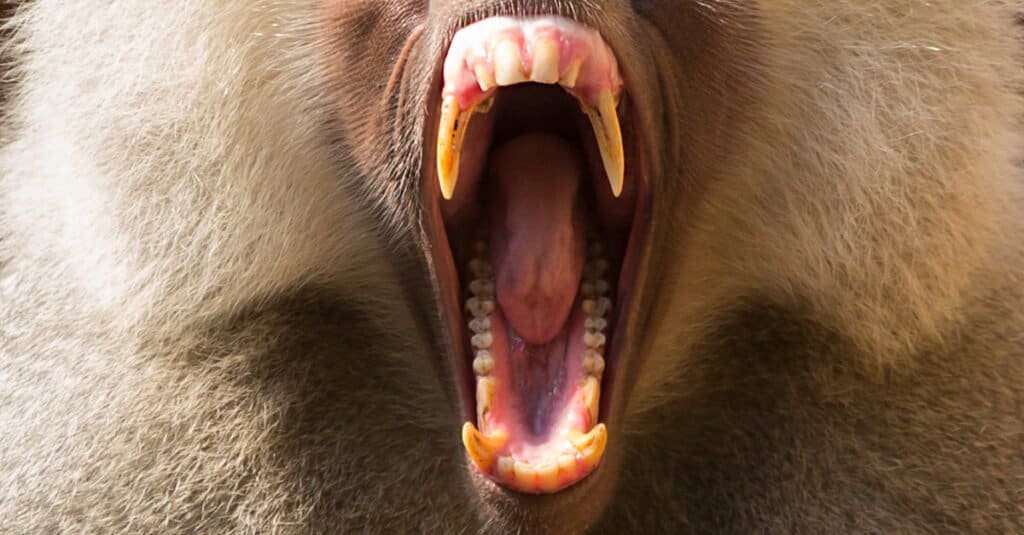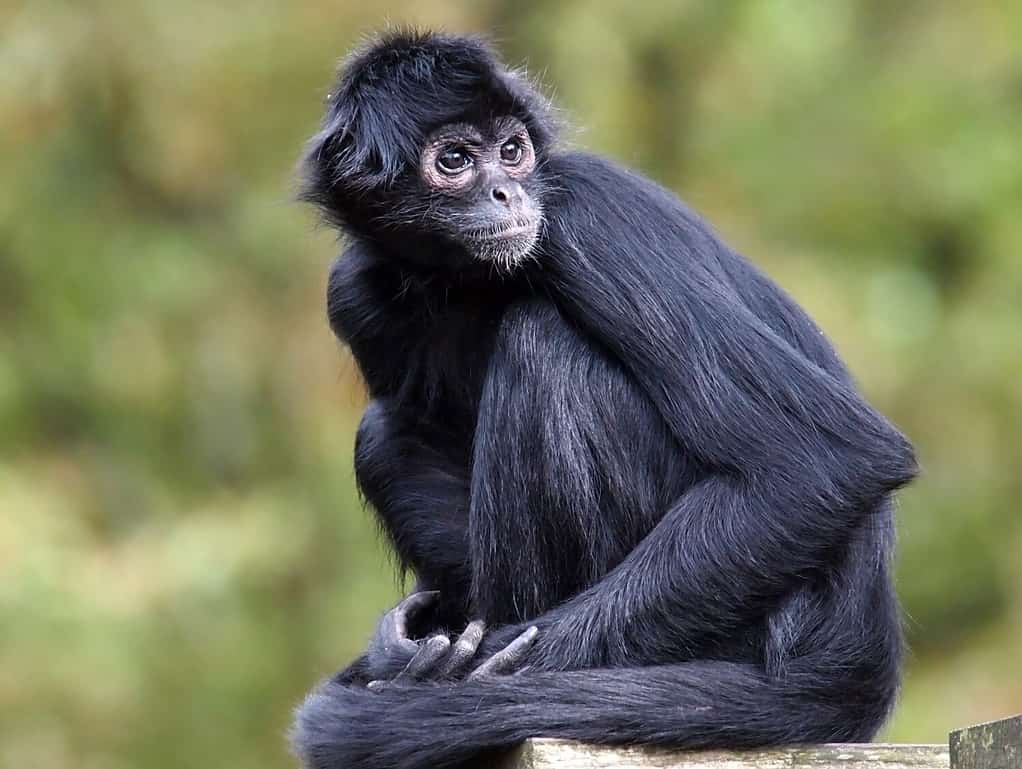Primates are an order of animals in the Mammalia class and we humans are one of them! The group also includes bushbabies, monkeys, and apes. Some primates, such as gorillas, weigh over 400 pounds whilst the smallest, Madame Berthe’s mouse lemur, weighs just one ounce. As you would expect from such a diverse group of creatures, some can be harmful to humans than others! Here, we discover the top 10 most dangerous primates in the world.
Humans

Wars and murder are common in human history.
©roibu/iStock via Getty Images
Human history is littered with war, violence, and destruction. Scientific studies of human violence over time have revealed that around one in 50 early humans were murdered by other humans. Fatality rates rose to around 12 percent in the Middle Ages but today it is in the region of one in 10,000 deaths. With the exception of mosquitoes, we are more likely to be killed by another human than by any other animal. Add to this the destruction we are causing to the natural environment which results in at least 150,00 human deaths annually and in countless other species being driven to extinction or, at least, to the brink of it. Our reputation as the most dangerous primate in the world should not be one that we are proud of!
Gorillas

Peaceful but powerful – gorillas can kill a human.
©Okyela/Shutterstock.com
Despite their portrayal in movies as fearsome adversaries, gorillas are generally peaceful creatures. They will, however, react defensively if they feel threatened and because they are so large and powerful, this can result in a dangerous situation for humans. Gorillas are around 20 times stronger than a human and can lift 1,800 pounds!
There have been rare reports of gorillas attacking and even killing humans but most gorilla violence is directed at other gorillas! There were only three recorded incidents of gorillas attacking people in the wild prior to 2000. The picture for captive gorillas is similar but there is some evidence that they become more aggressive when visitor numbers to zoos increase indicating that stress plays a part.
Slow Lorises

As the only venomous primate, slow lorises look more harmless than they actually are!
©hkhtt hj/Shutterstock.com
Slow lorises are one of only six venomous mammals in the world and the only venomous primate. They may look super cute with huge saucer-shaped eyes but they can be extremely dangerous. Their incisors are sharp and ideal for delivering venom (which is mixed with saliva) into a bite wound. A survey of practitioners handling them between 2016 and 2017 identified 54 who had been bitten of which 15 required medical attention. Some suffered an anaphylactic shock whilst others reported tingling and pain. It is likely that the lorises developed venom as a defensive mechanism against predators. To them, humans are predators!
Rhesus macaque

Rhesus Macaques monkeys have caused fatal injuries to humans.
©iStock.com/3yephotography
The rhesus macaque (Macaca mulatta) are Old World monkeys that are especially numerous in India. They are often found in urban areas, living in close proximity to humans and this has led to some dangerous conflicts. They are about the same size as a six-month-old human child and they do not fear humans. Indian news reports in particular often detail rhesus attacks on humans. Delhi Deputy Mayor S.S. Bajwa was pushed off a building by them resulting in fatal injuries. They have also snatched a four-month-old baby and threw him to his death from a building. In October 2023, a group of 200 of them rampaged around an Indian city looking for food and attacking humans with their sharp claws and teeth. Fifty people have also been injured in attacks in Japan.
Mandrills

A
mandrill
can inflict nasty injuries with their teeth!
©Maciej Kopaniecki/Shutterstock.com
The mandrill (Mandrillus Sphinx) is a medium-sized primate with a vivid and striking coloration. They weigh as much as an ape (up to 60 pounds) but are actually a type of monkey. These primates possess an impressive set of teeth including upper canines that can reach 2.5 inches in length. These together with the primate’s considerable strength and strong bite can do a lot of harm to a human body. When they hunt baby duikers they pull the hind legs off them! Most of the time they are shy and reclusive but will attack when they feel threatened.
Baboons

Baboons have fatally injured human babies.
©iStock.com/sneil375
These are exuberant and social animals but they can be dangerous when provoked. They are a medium to large Old World monkey that lives in parts of Africa and Arabia. There are five different species of baboon. They all have sharp, canine teeth, sharp claws, and can be aggressive when they are hungry. Even though they only stand around 30 inches tall, they are strong enough to overpower many humans. Baboon attacks are common and they have even broken into human houses and attacked humans when they were probably looking for food. They have thrown rocks at hikers, snatched and fatally injured a three-month-old baby, and attacked an 18-month-old baby in Africa.
Spider Monkeys

Pet
spider monkeys
have inflicted nasty injuries on humans.
©Edwin Butter/Shutterstock.com
Spider monkeys are large, agile primates and a native species of the Amazon rainforest. In their natural habitats, they come into contact with very few humans and attacks are very rare. Sadly, some are kept in captivity and a few are even kept as pets and this is when the danger arises. Even though the baby monkeys are adorable, these guys do not make good pets!
They are erratic and powerful creatures with sharp teeth and whilst they only weigh up to about 24 pounds, there are plenty of recorded attacks on humans. An escaped pet spider monkey called Spanky attacked a Home Depot worker in Florida in 2018 and another grabbed a young girl’s hair in a Mexican zoo. Yet another escaped pet spider monkey bit a resident of Southeast Houston and there are likely to be other incidents that have not been reported. The solution is clear – do not have these animals as pets!
Chimpanzees

Chimpanzees are enormously strong, estimated to be around four times stronger than a human of a similar size.
©Afandi Teguh Afriyanto/Shutterstock.com
We share up to 98 percent of our DNA with chimpanzees making them (along with bonobos) our closest living relative. They can reach up to 5.5 feet and weigh 130 pounds and are therefore similar in size to many humans. Chimpanzees are also highly intelligent but they are increasingly coming into conflict with human populations where their habitats are being threatened. Nowhere is this more obvious than in Uganda where there have been several horrifying reports of chimp attacks, especially on children. Groups of chimps have snatched infants from villages and killed them. Sadly, these are not isolated incidents. Reports indicate that more than 10 children aged between one and five years have been killed by chimps in Kagadi, Uganda and over 20 have been critically injured.
Capuchin Monkeys

Some pet capuchin monkeys have attacked their owners.
©Paulo Nabas/Shutterstock.com
Capuchin monkeys originate in the tropical forests of South and Central America and were made famous by appearances in Pirates of the Caribbean and Night at the Museum.
They can reach around 22 inches in height so they are small primates but they do not make good pets. They can become combative and unmanageable and that makes them dangerous. There are plenty of reports of them attacking their owners and other humans. Their bite is surprisingly powerful and could lead to the loss of a finger!
The photo featured at the top of this post is © bo1982 from Getty Images Signature/ via Canva.com
Thank you for reading! Have some feedback for us? Contact the AZ Animals editorial team.






